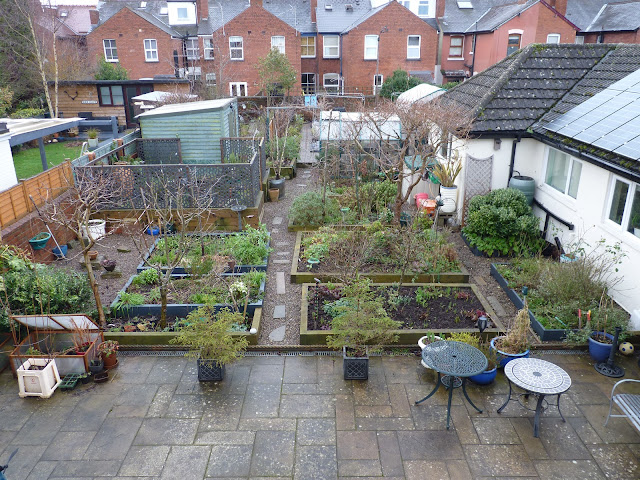The winter months of January and February have passed and the onset of Spring brings fresh growth and colour to the garden.The trees were still bare on March 3rd (below) but fresh green leaves are appearing, the Christmas Rose (hellebore) is still in full bloom and the early daffodils and...
Deer, Oh Dear

Spotted on the road outside the house by Owen and Lucy, a muntjac (Barking Deer) making its way home after a night on the town? Muntjac deer are a non-native species introduced into Woburn Park in Bedfordshire in 1894 although specimens were on view at London Zoo in the 1830s. Now widely found...
Magpies

In the past, there have been itinerant magpies in and around the garden. We often used to see them on country walks but they have, in recent years, started to colonise urban areas. For the last couple of years, a nesting pair has taken up residence in a neighbour's tree. Magpies are beautiful birds...
Air Source Heat Pumps - The first year

When we bought the house in November 2001, it still retained many of the features of its previous use as a small residential home. Apart from the walk-in shower, plethora of fire doors and working 'Smash Glass' red boxes for the fire alarm system, there were 2 gas boilers (one for the residents and...
Seasonal Changes in the Garden - February 2021

Continuing our look at the back garden as it changes though the seasons, we leave January behind and move into February.February 2nd: A fairly typical February day with overcast skies but moderately warm (9℃). Trees are bare and the Christmas Rose (Hellebore) in bloom.February 9th: A light sprinkling...
Popular Posts
-
Our next-but-one neighbours are on the move and asked if I could empty their plastic compost-bin. They wanted to take the bin with them but...
-
Polytunnel - 3rd August 2021 In the kitchen garden, I have a 3m x 4m polytunnel supplied and erected by Haygrove in Spring 2011; this wil...
-
Celery and celeriac are the same plant (Apium graveolons) with the former (var. graveolons) grown for its stalks and leaves and the latt...
Blog Archive
-
►
2025
(46)
- ► April 2025 (11)
- ► March 2025 (14)
- ► February 2025 (8)
- ► January 2025 (11)
-
►
2024
(122)
- ► December 2024 (3)
- ► November 2024 (11)
- ► October 2024 (13)
- ► September 2024 (8)
- ► August 2024 (9)
- ► April 2024 (12)
- ► March 2024 (14)
- ► February 2024 (13)
- ► January 2024 (12)
-
►
2023
(137)
- ► December 2023 (11)
- ► November 2023 (10)
- ► October 2023 (8)
- ► September 2023 (7)
- ► August 2023 (9)
- ► April 2023 (17)
- ► March 2023 (15)
- ► February 2023 (12)
- ► January 2023 (17)
-
►
2022
(138)
- ► December 2022 (7)
- ► November 2022 (13)
- ► October 2022 (14)
- ► September 2022 (10)
- ► August 2022 (14)
- ► April 2022 (13)
- ► March 2022 (11)
- ► February 2022 (12)
- ► January 2022 (10)
-
▼
2021
(53)
- ► December 2021 (5)
- ► November 2021 (11)
- ► October 2021 (8)
- ► September 2021 (2)
- ► August 2021 (3)
- ► April 2021 (3)
- ► March 2021 (2)
- ► February 2021 (6)
- ► January 2021 (4)
-
►
2020
(22)
- ► December 2020 (3)
- ► November 2020 (2)
- ► October 2020 (1)
- ► September 2020 (1)
- ► August 2020 (1)






